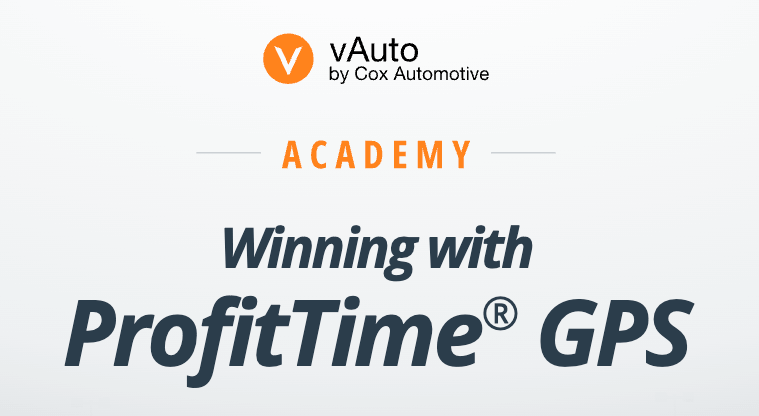At the mid-year point in 2022, Cox Automotive chief economist Jonathan Smoke described a used vehicle market in a slow but steady transition to more “normal” conditions.
That is, after nearly two years of an environment where used vehicle values, and retail prices, were largely on the rise, and retail demand showed no signs of slowing down, things are different.

For one thing, used vehicle depreciation is back. Cox Automotive data suggests that June 2022 will be remembered, and perhaps forgotten, as the month when week-over-week depreciation of wholesale values finally returned to the used vehicle market. The depreciation rates of nearly 1 percent were normal for the time of year, and their arrival sparked concern among dealers about aged inventory.
In prior months, strong retail demand and limited used vehicle supplies effectively eliminated the perennial worry of aged inventory for dealers. But depreciation returned when the average days supply of vehicles in dealer inventories hovered near 50 days, meaning some dealers had inventory they’d acquired 45 or 60 days earlier at the top of the market. These vehicles weren’t selling and dealers faced a choice—wholesale the vehicles before their values, and potential gross profit, declined further, or hold out for a retail buyer.
The return of used vehicle value depreciation also looked more “normal” compared to the way values rose across virtually all vehicle segments through 2020 and much of 2021. Analysts noted that specific vehicle segments—specifically late-model compact SUVs and sedans suffered less depreciation than segments like full-size SUVs and pick-ups. The volatility reflected broader trends such as rising gas prices and vehicle affordability concerns among consumers.
Meanwhile, the mid-point of 2022 also continued a trend of softer retail demand for used vehicles and sales. Across the board, retail sales volumes were off more than 10 percent compared to the same time in 2021. However, analysts note the retail sales volumes were on par with year-to-date sales in 2019, the last year many consider “normal.”
The market conditions that coalesced at the mid-point of 2022 affirmed what Cox Automotive analysts and vAuto founder Dale Pollak were suggesting—that the back-half of 2022 would require dealers to re-exert the appraising and pricing disciplines they followed in the years prior to the COVID-19 pandemic. Pollak also views the market’s return to more “normal” conditions as a prime opportunity for dealers to adopt a new method for managing used vehicles, known as Variable Management.
“Through the height of the historically high rate of retail sales and profitability for dealers in 2021, we saw dealers who adopted Variable Management performed even better than their peers,” Pollak says.
The statement follows a comparative analysis of dealers who use investment-based used vehicle metrics and those who don’t. The analysis showed that dealers who were high-adopters of the Variable Management method of used car management built into vAuto’s ProfitTime GPS (Global Profitability Solution) beat the national average front-end gross profit by 10 percent and sold vehicles 13 percent faster.*

Tim Nelson, general manager of Beaverton (OR) Honda, credits the Variable Management insights and metrics with helping him know the difference between vehicles that offer a high investment return and those with greater risk and lower investment value. “ProfitTime GPS helps you focus on what you’re really managing. It’s not the cars, it’s the cash,” Nelson says.
Elements of the Variable Used Car Management Strategy
One of the most striking aspects of the months that followed the rise of COVID-19 pandemic related to the resilience of the retail market for used vehicles, and the profitability and sales volume gains dealers enjoyed through 2020 and 2021. The results on dealership financials set records at many stores. With high retail demand and limited used vehicle supplies, market conditions were highly favorable for dealers.
But these results stand in sharp contrast to how dealers fared in used vehicles in the years preceding the pandemic. The National Automobile Dealers Association (NADA) reported that at the end of 2019, the average net profit per used vehicle retailed was $14. In 2018 and 2017, the average net profit per used vehicle retailed was $6 and $-2, respectively.
During these years, dealers were effectively selling more used vehicles and making less money. vAuto’s Pollak and a data science team undertook an effort to understand the root-causes of what many regarded as a head-scratcher: Why is it that dealers aren’t making the money they should when they retail a used vehicle? How is it possible that roughly half of all franchise dealers in the United States were effectively losing money, or making very little, while they were selling higher volumes of retail units?
The study revealed a key take-away: The average, viable retail shelf-life of used vehicles had dramatically shortened. Here’s how Pollak describes the finding in his 2020 book, “Gross Deception:”
“Through the years, I had come to understand that if a dealer owned a vehicle at a Cost to Market percentage of 85 percent on Day 1, it would likely reach a 90 percent Cost to Market percentage by the time it hit 60 days in inventory. This upward movement in the Cost to Market percentage is a primary reason I’ve long advocated that dealers who believe they can own a vehicle for 90 to 120 days are probably not going to achieve the gross profit they would like to see, if there’s any gross left at all when they retail the vehicle.
“As (we) evaluated the Cost to Market data for dealer inventories, we found something that proved both surprising and disturbing—signs of what we came to understand as a gross deception. Across the board, we noticed that sometime between 2016 and 2017—the same time frame that NADA’s financial data showed a precipitous drop in the average retail net profit per used vehicle retailed—the time it took a vehicle to reach a Cost to Market percentage of 90 percent had essentially been cut in half.
“That is, if it used to take 60 days for a vehicle to reach a Cost to Market percentage of 90 percent, our analysis showed that vehicles now hit this Cost to Market threshold in 30 to 45 days.”

The finding led to the first element of the Variable Management strategy for used cars—dealers should tie their inventory stocking levels to their rolling 30-day total of retail sales. Pollak recommends this benchmark to help dealers calibrate their inventory acquisition efforts to minimize the risk of vehicles crossing the 30-day mark in inventory.
Interestingly, the 30-day benchmark Pollak began advocating in 2019 and 2020 proved to be a key factor in the success dealers achieved during the months that followed the onset of the COVID-19 pandemic: For much of 2020 and 2021, dealers were selling vehicles as fast as they could acquire them. As a result, the average days supply in dealer inventories ran between 30 and 35 days for much of this time. To be sure, many dealers wanted to stock more used vehicles but constrained supplies in the wholesale market made acquisition more difficult and more costly.
Another element of the Variable Management strategy for used vehicles came from additional insights Pollak and the data science team gleaned from studying why some vehicles did not lose their viable retail shelf life in 30 days. The team determined that there are three characteristics that, when properly weighted, determine a vehicle’s investment or net profit potential—the vehicle’s adjusted Cost to Market (e.g., how you own the vehicle), it’s like-mine Market Days Supply and its current retail sales volume.
With these insights, dealers can know if a vehicle’s investment value fits a Bronze, Silver, Gold or Platinum ranking. In addition, ProfitTime GPS uses the rankings to recommend the right retail price for a vehicle, helping dealers separate the earners from the turners. The solution also helps dealers know the amount to pay for a vehicle to meet the inventory acquisition targets they establish for individual sourcing channels.
“Our work to develop the Variable Management method of used car inventory management gives dealers greater clarity on how to acquire cars right, and price them right, to yield optimal ROI and net profit, even as the market continues to normalize and retail sales don’t come as easy as they have in the recent past,” Pollak says. “That’s why I believe dealers who manage their used vehicles as investments, and don’t aim to retail every vehicle as fast as possible, will out-perform those who have yet to make the transition.”
*vAuto data, April-Aug 2021, results based on limited dealers highly aligned to ProfitTime recommendations vs other Provision dealers.

















